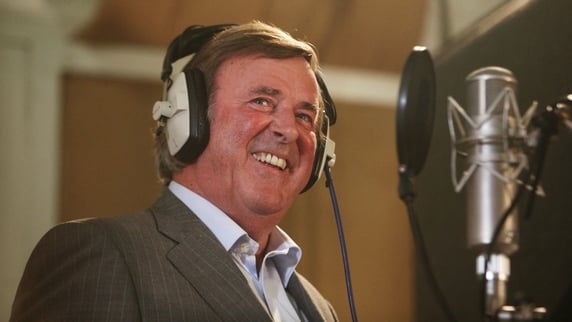Terry Wogan's path to UK success was not immediate and the former bank-teller had many bridges to cross before he became one of the most popular broadcasters in Europe.
After leaving school, Wogan joined the staff of the then-named Royal Bank of Ireland as a clerk, earning a fiver a week beginning at a Dublin branch in Cornmarket, before working at the Phibsborough branch.
In 1963 he saw a newspaper ad for announcers at Radio Éireann, and was duly accepted on to a month-long evening course, took the full-time staff job which was offered to him and left the Bank of Ireland. There were a reputed 10,000 applicants for the announcer posts.
In the early days, he read the news at Radio Éireann and hosted a hospitals request show. He commentated on the funeral of President Seán T O’Kelly, and, in June 1963, covered the visit to Ireland of JFK. When Teilifis Éireann arrived ion 1961 and were hiring newsreaders, Wogan was recruited, although he did not stay long enough to be as familiar a face as Charles Mitchel, Andy O'Mahony or David Timlin, household names on the 1960s TV news bulletins.

At some point an audition tape arrived to the BBC, sent by the ambitious young Limerickman. in 1965 he began presenting Midday Spin on the Light Programme, hosting it remotely from an RTÉ studio in Dublin.
In 1967, another tape of his Radio Éireann show Terry Awhile gained him an audition for the BBC’s new nightly programme Late Night Extra, which went out on the fledgling BBC Radio 1 and Radio 2 channels. Wogan was offered a six-week contract to present the show on Wednesdays. He would take a flight to London, returning the next day, for a fee of £35, although he had to pay subsistence and travel - air fares, hotel and food - from that.
He eventually left RTÉ to move, with his wife and young son, to England. He stood in for Jimmy Young on his morning show on Radio 1 in July 1969 and a few months alter, he presented the afternoon show broadcast simultaneously on Radios 1 and 2.

In 1972 he followed John Dunn as presenter of Radio 2’s breakfast show, bringing his new Fight the Flab theme with him to popular acclaim. Later that year he was given his first television chat show, Lunchtime with Wogan, for ATV, recorded at Elstree studios.
Over ten years later, his TV chat-show was going out three times a week, a huge phenomenon in the 1980s, watched by millions. Aside from the 30 years he spent in charge of BBC’s Eurovision coverage, he hosted the annual fundraiser Children in Need. (Interestingly, his first Eurovision commentary aired from Dublin, that year's host city, in 1970.)
He reported from the Olympic games for radio from Montreal in 1976, from Los Angeles in 1984 and from Barcelona in 1992.

